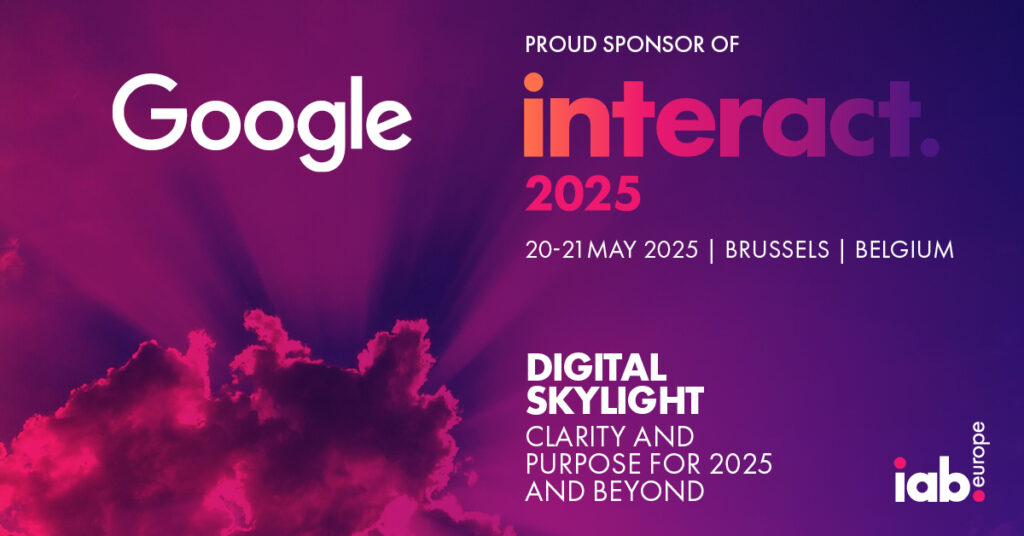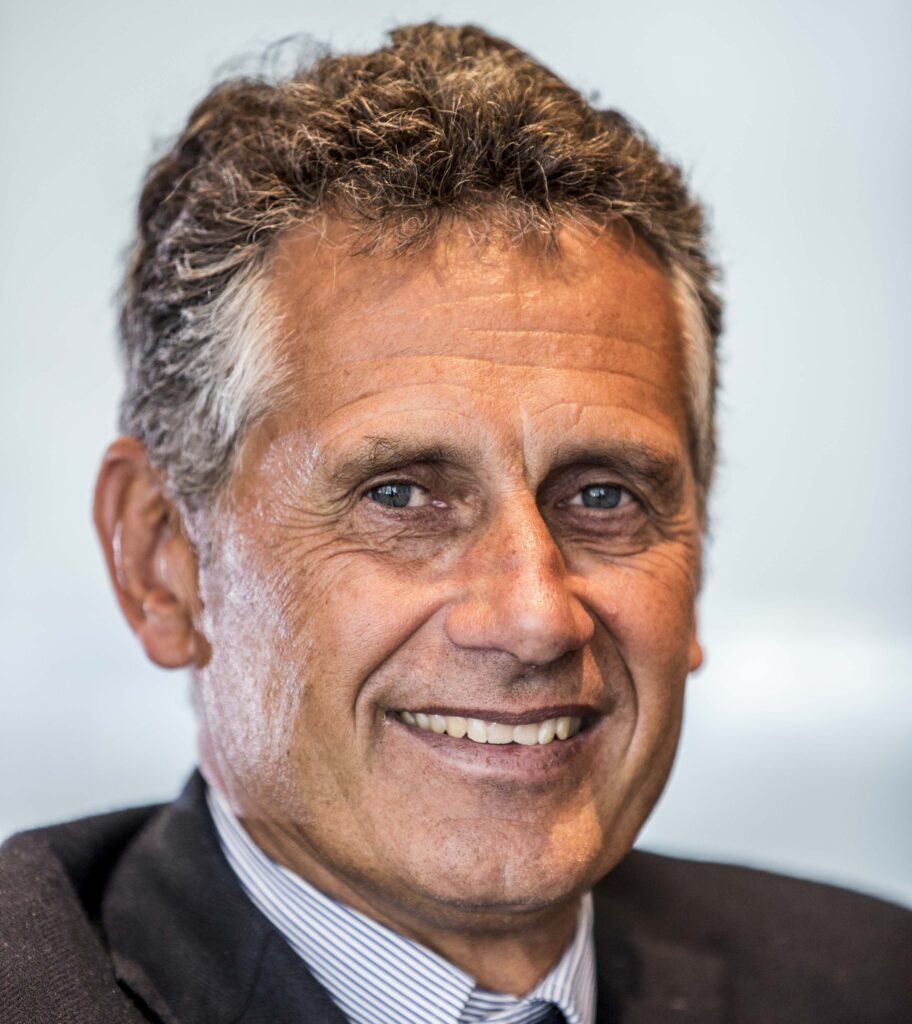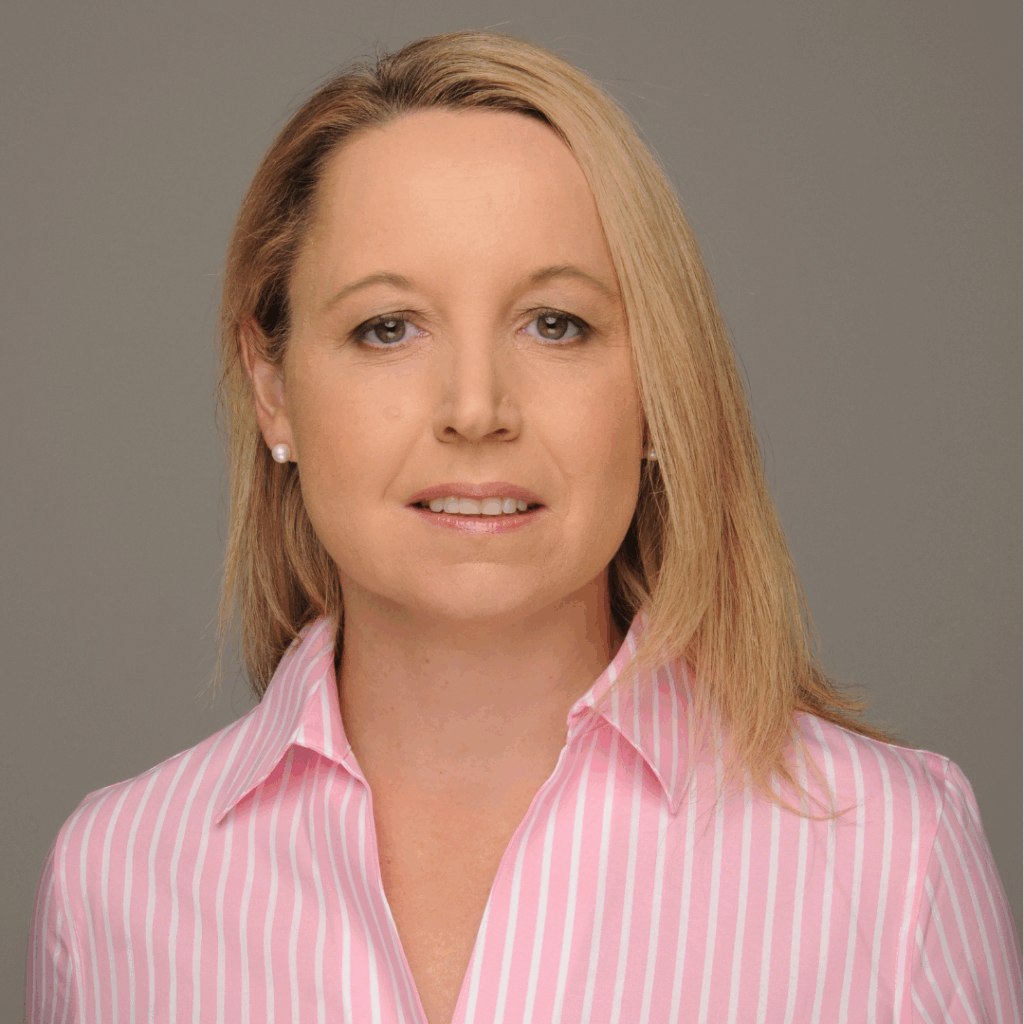Brussels, Belgium, 29th May 2025 – IAB Europe has announced the official launch of its Retail Media Certification Programme for retailers, following a successful initial pilot phase. This first-of-its-kind initiative aims to set a new standard for transparency, consistency, and accountability in Retail Media measurement across Europe. Two leading retailers - Nectar360, Sainsbury’s retail media business, and Albert Heijn - are in the final stages of the compliance audit and are set to become the first certified retailers under the programme.
In parallel, IAB Europe is also launching a new beta phase of the certification programme tailored specifically for Ad Tech players that support the retail media ecosystem, expanding the programme’s impact across the broader Retail Media ecosystem.
The Retail Media Certification Programme is designed to help retailers and technology providers validate their measurement practices against industry-agreed standards. For retailers, the full certification is now available, following months of collaboration, feedback, and pilot testing during the beta phase. This rigorous process includes an independent audit to assess compliance with measurement standards in both on-site and off-site Retail Media reporting.
Commenting on the launch, Jason Wescott, Global Head of Commerce Solutions at GroupM and Chair of IAB Europe’s Retail & Commerce Media Committee, said, “A lack of standardisation has long been a barrier to retail media investment. We've addressed this by delivering both measurement standards and now a certification programme to give advertisers confidence in the networks they work with. I’m delighted Nectar360 and Albert Heijn are the first to soon be certified and look forward to welcoming ad tech participants into the next phase.”
Amir Rasekh, Managing Director, Nectar360, also said, “Our clients are at the heart of everything we do, and we’re continually working in pursuit of greater transparency, consistency, and accountability to deliver better outcomes for them. This is an important piece of work by IAB Europe, which is why we were determined to be among the first two businesses to be certified. We also understand the need to standardise and play our part in removing complexity in the retail media market for clients, whilst also continuing to innovate and develop the sophistication of our measurement practices according to their needs.”
Max de Jong, Sr. Manager Media Performance & Consumer Insights at Albert Heijn Retail Media Services, said, “We’re proud to be one of the first retailers globally to take part in this pilot. It’s another important step forward in our journey to build AH Retail Media Services into a mature, measurable, and trusted media organisation.”
The certification programme has been developed in consultation with leading industry experts, including members of IAB Europe’s Retail & Commerce Media Committee, Retailer Leaders Council, National IABs and Federations, brands, agencies, and retailers. It also aligns with global standards where possible, including ongoing coordination with the Media Rating Council (MRC) to ensure harmonisation of accreditation efforts across the Atlantic.
Independent auditors for the programme include Alliance for Audited Media (AAM), Audit Bureau of Circulations (ABC UK), and Centre d'Étude des Supports de Publicité (CESP).
Retailers interested in achieving certification can now apply here. Meanwhile, Ad Tech partners are also invited to register interest in joining the beta phase using the same form here, where they will receive guidance on the certification framework and contribute feedback to help refine the process ahead of a full rollout in 2026.
For more information about the Retail Media Certification Programme, view our FAQs here, and visit the IAB Europe website here.
To learn more and gain further insights into the Retail Media Certification Programme, join us at our upcoming Retail Media Certification Townhall on 12th June at 15:00 CET. Register here.

The digital advertising community is preparing to gather once again on the sun-soaked shores of the French Riviera for the Cannes Lions Festival 2025, taking place from 16th to 20th June. Known for its blend of creativity, insight, and inspiration (and a splash of rose and glamour), the festival remains one of the most anticipated moments in the industry calendar.
This year, IAB Europe is excited to return to Cannes to connect with leaders, spark conversations, and showcase the pivotal work we’re driving across Retail Media, Connected TV, and more.
Our Chief Economist, Daniel Knapp, Industry Development & Insights Director, Marie-Clare Puffett, Marketing & Communications Director, Lauren Wakefield, and Data Analyst & Sustianability Lead, Dimitris Beis, will be on the ground and available to share insights, discuss industry developments and opportunities, and highlight how our initiatives can support your strategic goals. If you'd like to meet with the team, get in touch!
Here’s a sneak peek at what’s in store for our time in Cannes:
Global Media Sustainability Framework v1.2 Launch
Join us at the Sustainability Hub, Palais (next to the Debussy Theatre - Palais pass required) for the release of GMSF v1.2.
This is the first major update to the framework filling major data gaps – especially in digital – and equipping advertisers, agencies, and media owners with voluntary industry standards to estimate and reduce emissions across six main media channels.
Speakers include our very own Data Analyst and Sustainability Lead, Dimitris, alongside:
Coffee & Commerce in Cannes with PubMatic
In partnership with PubMatic, we are hosting an exclusive breakfast and roundtable discussion.
Attendees will be among the first to hear key findings from IAB Europe’s Attitudes to Retail Media survey and learn how advertisers, agencies, and Retail Media Networks across Europe are approaching investment, growth, and innovation. They’ll also gain fresh insights from PubMatic on how the open internet is powering the next wave of commerce media and what it means for the future of the industry.
Addressability & Measurement Round Table & Networking Session with Verve
With thanks to event hosts Verve, we will be hosting an informal roundtable and networking event for our Addressability Working Group members. Participants can expect to join industry stakeholders to hear their perspectives on the current addressability and measurement landscape in Europe. Think lively conversation with practical insights on how the landscape will develop.
If you’re working in the addressability space and are interested in attending, please vist the event page here and RSVP here to attend.
Connected TV (CTV) Measurement Roundtable Brunch with Nielsen
In partnership with Nielsen, we will host an exclusive roundtable discussion, bringing together CTV Leaders from our CTV Working Group to delve into the pivotal area of Connected TV (CTV) measurement within the European landscape. This focused roundtable will provide a valuable forum for working group members to connect, exchange insights on the latest measurement challenges and innovations, and build meaningful relationships.
If you’re working in the CTV space and are interested in attending, please email the team below.
If you are heading to Cannes and would like to connect with the team, please reach out to:

Marie-Clare Puffett
puffett [at] iabeurope.eu

Lauren Wakefield
wakefield [at] iabeurope.eu

Daniel Knapp

Dimitris Beis
beis [at] iabeurope.eu
Brussels, Belgium, 22nd May 2025 - IAB Europe, the leading European-level industry association for the digital marketing and advertising ecosystem, is pleased to announce the appointment of a new Board of Directors. Elected during the hybrid Annual General Meeting (AGM) held in Brussels on 20th May 2025, the new Board will serve a two-year mandate and support the execution of IAB Europe’s strategic priorities.
The Board is composed of 10 National Federation Members and 10 Corporate Members, representing a cross-section of Europe’s digital advertising value chain, from leading publishers and media owners to ad tech providers and agencies. This multi-stakeholder composition ensures balanced representation across the ecosystem and reinforces IAB Europe’s role as the unified voice for digital advertising in Europe.
The new Board will oversee the implementation of IAB Europe’s 2025 work plan, which centres on four strategic pillars:
National Federation Board Members:
Corporate Member Directors:
Townsend Feehan, CEO of IAB Europe, commented: "This is a transformative period for our industry, marked by evolving regulation, rapid technological innovation, and increasing demand for sustainable practices. Our 2025 board brings together an exceptional group of leaders who are committed to collaborating across national and corporate perspectives to build a responsible, transparent, and future-ready digital advertising ecosystem. The team and I look forward to working closely with them to deliver meaningful progress for our members and the wider industry."
Double-digit growth marks another year of acceleration, with Social, Video, and Retail Media leading the way.
Brussels, Belgium, 21st May 2025 – IAB Europe, the leading European-level industry association for the digital marketing and advertising ecosystem, today released its 2024 AdEx Benchmark Report live at Interact 2025, revealing that the European digital advertising market has achieved double-digit growth, surpassing €118.9 billion in annual revenue for the first time in constant currency terms.
Now in its nineteenth year, the AdEx Benchmark Report remains the definitive source for advertising expenditure insights across Europe. This year’s edition includes data from 30 national markets - welcoming Portugal for the first time - to deliver a fully harmonised digital advertising investment total for the region. Notably, the Report also offers, for the first time, a comprehensive overview of Retail Media as a category.
Despite macroeconomic uncertainty in 2022, the European digital advertising market rebounded strongly in Q4 of 2023, continuing this trajectory into 2024. The latest data reveals double-digit growth of 16%, with total investment reaching €118.9 billion, reinforcing the continued investment by advertisers in the channels and formats shaping the innovative digital advertising ecosystem. This is also the strongest growth recorded since 2011, with the exception of 2021’s digital bonanza in the wake of the COVID-19 pandemic.
Key Growth Drivers:
Market Highlights:
A Dynamic 2024 Outlook
Commenting on the results, Daniel Knapp, Chief Economist at IAB Europe, said: "Last year, we forecast a 10% growth rate for 2024, which felt ambitious at the time. Yet, the European digital advertising market exceeded these expectations, growing by 16% in constant currency terms and crossing the €100 billion milestone to reach €118.9 billion for the first time. Even using current exchange rates, the market grew by 14.9% – a testament to digital advertising's integral role in European advertising strategies. The end of 2023 marked a clear upward trend, which continued into and through 2024. While 2024 shaped up to be another healthy year, early forecasts for 2025 suggest a renewed period of volatility and that the ‘rollercoaster’ may be restarting. Driven by macroeconomic uncertainty and geopolitical tensions, including the impact of new EU tariffs, advertisers are likely to adopt a cautious, ‘wait-and-see’ approach, prioritising measurable outcomes and performance over broad experimentation.”
The full AdEx Benchmark Report 2024 is available to download on IAB Europe’s website here and provides granular insight into digital advertising trends across 30 European markets.
Join the Conversation
To explore the findings in more detail, join IAB Europe’s virtual AdEx Benchmark Townhall on 28th May at 12:00 CET, where Daniel Knapp will dive into the trends and what the results mean for the future of digital advertising in Europe. Register here.

With Interact 2025 just around the corner, we’re continuing to highlight some of the stand-out sessions scheduled at this year’s event. This time, we’re diving into the cutting-edge world of Privacy-Enhancing Technologies (PETs), brought to you by our headline sponsor, Google.
Taking place on 20th-21st May in Brussels, Interact is the European conference bringing together leaders from across the digital advertising ecosystem under one roof. With a central theme of ‘Digital Skylight – Clarity and Purpose for 2025 and Beyond,’ this year’s event will explore the economic, social, and industry forces shaping and driving the future of our industry.
As privacy regulations tighten and user expectations evolve, PETs are poised to be a critical element in ensuring the future of digital advertising remains both innovative and privacy-respecting. At Interact, one of the standout sessions will shine a light on how PETs are paving the way for a more secure, collaborative, and transparent digital ecosystem.
Find out more about the agenda here, and discover what’s in store for this session below:
Unlocking PETs: A Key Workshop at Interact 2025

In our afternoon workshop “Unlocking Privacy Innovation: PETs Solutions and Recommendations for the Digital Ecosystem,” experts will provide a deep dive into the potential of PETs to revolutionise the way digital advertising handles data privacy. The session will feature a keynote by Sebastian Grantz, Global Data & Privacy Manager at Google, and a panel discussion tackling PETs from multiple angles - policy, platform, and industry.
Of the event, Sebastian said, "I'm thrilled to be in Brussels for IAB Europe's Interact conference, diving into the exciting world of Privacy-Enhancing Technologies and the new business opportunities they unlock!"
A 360° View: Tackling PETs from Policy, Platform, and Industry Perspectives
The workshop will explore how PETs are evolving to meet the needs of privacy-conscious users and organisations alike. Moderated by Sebastian Grantz, the panel will include:

Peter Craddock, Partner at Keller and Heckman LLP, offering legal insights on the intersection of PETs and data protection laws like GDPR.

Alex Cone, Senior Product Manager, Privacy Sandbox at Chrome, shedding light on how browsers like Chrome are shaping the future of PETs.

Sylwia Sajewska, Country Manager Germany at Decentriq, who will highlight the ways PETs enable secure data collaboration across industries.
Don’t miss out on this critical session at Interact 2025, where industry leaders will explore the transformative potential of PETs and their role in shaping the future of digital privacy.
Last Chance to Get Your Tickets for Interact 2025
Interact 2025 isn’t just about our immersive workshops and thought leadership content on stage. It’s also the place to connect, collaborate, and build the future together, and we can't wait to welcome you to Brussels.
With less than a week to go, don’t miss out on our limited time offer for 20% off: Use code iab20eu at checkout and get 20% off your ticket!

We’re just one week away from Interact 2025, happening on 20th-21st May at nHow Brussels – and this is your final chance to register with a 20% discount!
🎟️ Register now and use code iab20eu at checkout to save: Register for Interact 2025
Under the theme ‘Digital Skylight – Clarity and Purpose for 2025 and Beyond’, Interact 2025 will bring together the brightest minds in digital advertising for two days of bold ideas, actionable insights, and game-changing conversations.
From policy and privacy to retail media and innovation, our agenda is built to inspire action and equip you with the knowledge you need to navigate the year ahead.
In a fast-evolving regulatory landscape, how can we strike the balance between privacy and progress? This essential session – “Policy in the Spotlight: Balancing Privacy and Innovation in Europe’s Evolving Regulatory Landscape” – features leaders from Microsoft, NOYB, Acxiom, and more.
Join Sebastian Grantz (Google) for a keynote on the future of PETs, followed by a panel and audience Q&A exploring real-world applications and innovations in privacy-first advertising.
Retail Media is exploding across Europe. Don’t miss insights from Colin Lewis (Retail Media Works) and Heike Schneider (Douglas Marketing Solutions) as they unpack growth opportunities and practical next steps.
Be the first to hear the results of the AdEx Benchmark 2024, presented by Daniel Knapp – a deep dive into the trends and market growth shaping the digital landscape in Europe.
Hear from leaders across top brands, publishers, tech platforms, and agencies. Walk away with practical takeaways to drive your business forward.
It’s not just about great content – it’s also about the connections you’ll make. From opening night drinks to our rooftop closing party at Rooftop 58, you’ll have plenty of opportunities to network with Europen leaders.
⏳ Final seats are going fast – don’t miss your chance to be part of Europe’s premier digital advertising event.
Register now and use code iab20eu for 20% off
Retail Media has firmly established itself as one of the most dynamic and fastest-growing spaces in digital advertising. As investment surges and innovation accelerates, the demand for consistent, transparent, and scalable measurement has become a top priority.
To meet this need, IAB Europe has produced two measurement standards: the Retail Media Measurement Standards for On and Off-Site in Europe and, in collaboration with the IAB U.S., the In-Store Retail Media Definitions and Measurement Standards. These initiatives aim to harmonise measurement practices across the region, providing a shared foundation for evaluating performance and driving continued growth.
View the Standards Below
Developed by members of IAB Europe’s Sustainability Standards Committee, this blog dives into the complexities of ad file compression, exploring how reducing file sizes may or may not translate into measurable carbon savings, the challenges of quantifying network emissions, and the broader implications for performance and infrastructure efficiency.
Thank you to the following contributors for sharing their expertise:

Dimitris Beis, Data Analyst & Sustainability Lead, IAB Europe

Andrew Hayward-Wright, VP Media Operations, SeenThis

Benjamin Davy, Sustainability Director, Teads
As the digital advertising ecosystem assumes a more proactive approach to the environmental impact of digital media campaigns, stakeholders are on the hunt for quick wins – actions that can be implemented to reduce the carbon footprint of media buys without disrupting business operations or incurring additional cost. One of the areas where the ecosystem has identified potential for optimisation is ad delivery, i.e., the transfer of ad-related files to the end user. Advertisers have invested in services centred around compressing image and video assets more efficiently, with the dual purpose of reducing load on networking resources and improving performance.
Reducing the file size of ads is a seemingly simple and straightforward optimisation: we might think that it costs practically nothing to compress files more aggressively, no complicated tech like custom carbon-aware bidding algorithms is required, and the idea that reducing the volume of data traveling through networks leads to networks using less energy is relatively intuitive. However, once we consider questions like how creative assets are handled until they reach the user consuming the ad, and how the internet’s emissions are quantified, doubt may be cast on the idea that small reductions in ad payloads lead directly to energy savings.
The emissions associated with transferring ad payloads through networks can often represent a material component of a campaign’s total environmental footprint. This point is well-illustrated by the following campaign example, whose emissions are quantified using a basic application of the latest proposed methodology for digital ad emissions, developed by IAB Europe’s Methodology & Framework Working Group. Using some demo data to represent a programmatic video campaign in the UK, we observe that the level of emissions estimated for ad delivery makes up almost a quarter of the total estimated campaign emissions, excluding production.
The level of impact will vary with the ratio of users on fixed and mobile connections, respectively, as these have a different carbon intensity as surfaced by the lifecycle assessments referenced in the methodology. Similarly, the estimated impact is a function of the transfer payload – this is the relationship that leads to claims around lighter files and a lower carbon footprint. Indicatively, the electricity consumption associated with transferring a given payload over a mobile connection is more than 10 times larger than the respective figure for fixed connections. In the example above, delivery emissions were estimated by assuming that the average payload for each ad was about 2.5 MB. An average ad payload reduction of half a megabyte would result in a 20% reduction in the estimated emissions. Is this reduction on paper associated with a real, tangible reduction in carbon footprint?
A short refresher on carbon accounting is required to answer this question. When quantifying the emissions of a system, whether that be an electricity grid, water grid, or information grid, in this case, different approaches can be followed. Oftentimes, the total inventory of emissions is divided by the total volume of goods or services provided, which is called an attributional approach (e.g., kilograms of CO2e per kWh of electricity consumed in a year). These attributional carbon intensities are quite useful as they provide an easy way to gauge the emissions that each unit of a good or service is associated with. On the flip side, they do not reflect the consequences of the level at which a good or service is demanded. They are not meant to quantify carbon emissions comparatively and may therefore fail to provide meaningful figures in cases where optimisations are being evaluated. Concretely, for our use case, a lower file size will be attributed a lower share of the total emissions that were estimated at a certain point in time for the network infrastructure.
From a carbon footprint standpoint, systems are often less or more responsive to changes in demand than these figures would suggest, depending on factors such as load. A water grid is a useful non-digital example here: energy is required continuously to maintain pressure in the pipes and ensure the system is ready to respond to households’ demand for water. The system’s energy draw may still increase under load, but a significant portion of its emissions will result from the overhead required to keep the system running and delivering. Using an attributional carbon intensity, calculated by dividing total emissions by total volume of water, would overrepresent the impact of consuming less water and underrepresent this overhead.
It's a similar story with networks and digital infrastructure: baseline energy consumption is high and idle capacity is considerable, meaning that small changes in payloads may not result in direct energy savings. In simple words, and to maintain the analogy, more energy is required to keep the internet’s pipelines flowing rather than to transfer any specific piece of information. It is worth noting that cellular networks are more power proportional to traffic, especially with the rise of energy-saving techniques.
The internet also happens to be incredibly chaotic, adding another layer of uncertainty. Quoting one of the papers on network electricity consumption reviewed by the Methodology & Framework Working Group, “a core design principle of the internet is that it is operational 24/7 and resilient to failure, so each packet may take a completely different route over entirely independent networks.” Since it is impossible to precisely predict the route the data will take during transfer, the same applies to the carbon footprint of this transfer.
The points above do not mean that reducing the payload of ads is a futile exercise. In the long term, lower cumulative demand for digital infrastructure may lead to less capacity expansion and therefore have an indirect impact on the system’s total emissions. However, claims of carbon footprint reductions in the short term should be checked for responsible use of references and a clear causal link between the technology or optimisation being used and the reduction in impact.
IAB Europe has explored image and video asset compression in collaboration with members and other industry bodies in the Sustainable Creatives Task Force. Through a survey, research, and testing, the Task Force collected insights into how the digital ad ecosystem compresses files, what’s defined in industry guidance and requirements, and which actions are suggested as best practice. Behind this work is the hypothesis that more efficient compression and delivery can yield both lower load on IT infrastructure and improvements in ads’ performance. Apart from potentially reducing energy consumption, lighter ad files also load faster – a difference that can be perceivable and affect user behavior. Multiple examples of faster loading leading to improved KPIs were covered in the IAB Europe webinar held to showcase the Task Force’s work, and the focus is now on testing the hypothesis above in a live campaign environment.
As such, there may be enough (more traditional) upside to drive further work in this area beyond the current incentive of showcasing corporate responsibility and leadership on digital emissions. Multiple companies in the digital ad ecosystem are focused on developing technologies that lead to better ad outcomes via improvements in user experience. Beyond reducing ad payload, many implement practices such as lazy loading to deliver ads with both better performance and potentially lower emissions. Furthermore, advancements in adaptive streaming technologies allow for the dynamic adjustment of video quality and delivery based on network conditions and user viewing behavior, ensuring a smoother user experience while potentially minimising unnecessary data transfer.
The second main question to consider in relation to the carbon footprint of ad delivery is which of the stakeholders involved in a digital ad campaign actually control the compression of creative assets. Before they reach end users, the assets that make up digital ads are likely to have undergone multiple rounds of compression. Original video files may be shot in raw camera formats and then compressed to an intermediate codec in post-production before being compressed further to arrive at a master file – the version that is uploaded to an ad server (referring to any hosting service for ads, in-house or third-party). Usually, the master file is also subject to requirements and guidelines issued by the ad server. From there, the ad server is likely to create multiple transcodes from this master file to serve in different environments (e.g., based on bandwidth or compatibility), with the logic depending on factors such as how many times the ad is likely to be served.
The ultimate dimensions of the creative assets delivered to end users are primarily determined by the transcoding processes implemented by each ad server, based on the master file provided. While certain advanced configurations may afford advertisers greater control over these transcoding parameters, in the absence of such granular control, additional compression applied to the master file prior to upload does not guarantee a directly proportional reduction in the file size of the resulting transcoded assets. Indeed, the final file sizes and, consequently, the campaign's network resource utilisation during delivery, are contingent upon the specific transcoding algorithms employed by each ad server.
Furthermore, applying compression to the master file beyond the levels recommended by a given ad server's specifications can potentially diminish the overall efficiency of the platform's optimisation process. If excessive data reduction is performed prior to upload, it may impede the ad server's ability to effectively transcode and optimise the asset for various delivery scenarios, potentially leading to sub-optimal file sizes.
The environmental impacts of data transfer are not directly proportional to traffic. This means smaller file sizes don't always translate to a measurable carbon reduction from a technical standpoint.
However:
Environmental impact assessment methodologies have limitations. Attributional assessments can suggest impact reductions on paper, but these should be interpreted cautiously. Still, they offer a useful incentive to adopt best practices with long-term benefits.
Although the immediate technical impact of reducing file sizes may be small, widespread, consistent improvements across the digital value chain can influence future infrastructure decisions and support a more sustainable ecosystem. Progress depends on collective effort and a shared commitment to responsible digital design.
For more information on IAB Europe’s Sustainability Standards work and how you can get involved, please visit our Sustainability Hub here or contact Dimitis Beis at beis [at] iabeurope.eu.

With Interact 2025 just over a week away, we’re continuing to shine a spotlight on some of the must-attend sessions from this year’s agenda. This time we’re turning our attention to Policy.
Taking place on 20th-21st May 2025 at nHow Brussels in Belgium, Interact is the conference that brings leaders from across the digital advertising ecosystem together, all under one roof. With a central theme of ‘Digital Skylight – Clarity and Purpose for 2025 and Beyond’, this year’s event will explore how our industry can navigate a fast-changing landscape shaped by economic uncertainty, regulatory shifts, and technological advancements.
Find out more about the event here, and discover what to expect on the topic of Policy at the event below.
Afternoon Masterclass - Regulatory Framework on Digital Advertising: Balancing Privacy and Innovation
Joining the afternoon masterclass agenda, our deep-dive policy session will explore one of the most urgent questions facing our industry - how can we uphold user privacy while enabling the innovation and growth needed to keep Europe competitive?
Moderated by Daphne Van Doorn, Head of EU Affairs at BVDW, the session will bring together a powerhouse panel of experts from across the ecosystem:

Max Schrems, Founder, NOYB

Chris Hydak, Assistant General Counsel, Privacy and Regulatory Affairs, Microsoft

Dr. Sachiko Scheuing, European Privacy & AI Governance Officer, Acxiom

Miguel Valle del Olmo, Attaché for Digital Matters, Spanish Permanent Representation to the EU
This discussion comes at a pivotal time. The European Commission’s 2025 work programme signals a renewed focus on regulatory simplification aimed at boosting European competitiveness. With the withdrawal of the draft ePrivacy Regulation and the upcoming Digital Fairness Act, alongside efforts to streamline and potentially consolidate the digital acquis under a new European Data Union Strategy, the future direction of privacy and digital advertising regulation is once again in the spotlight.
Plus, the Commission has announced plans for a targeted reform of the GDPR, scheduled for 21st May - the very date of our session.
Key topics up for debate will include:
This session is just one of many insightful discussions happening at Interact 2025, with expert voices from across the digital advertising ecosystem coming together to dive into and debate some of the hottest topics of today.
Don’t Miss Interact 2025
Interact 2025 isn’t just about those in-depth sessions; it’s also the place to connect, collaborate, and build the future together. With a packed agenda that also includes the release of the AdEx Benchmark Results, deep-dive discussions, and evening networking events, this is an event not to be missed.
Don’t Miss Out on Our Limited Time Offer for 20% Off:
Use code iab20eu at checkout and get 20% off your ticket – offer valid for a short time only!
View the Full Agenda
Check out the speaker lineup
Get Your Tickets

The countdown is officially on! In just two weeks, our flagship event, Interact 2025, will bring together the brightest minds in digital advertising for two days of cutting-edge insights, high-impact discussions, and world-class networking.
Taking place on 20th-21st May at nHow Brussels, this year’s edition promises to deliver the clarity, purpose, and actionable strategies the industry needs to navigate change and drive sustainable growth.
🎟️ Haven’t booked your ticket yet? Don’t miss our limited-time May Day offer: Get 20% off with code iab20eu at checkout!
Digital Skylight – Clarity and Purpose for 2025 and Beyond
In a rapidly evolving digital landscape, this year’s theme gets straight to the heart of what matters most - cutting through uncertainty and focusing on the real opportunities shaping the future of digital advertising.
🎤 Inspiring Keynotes & Fireside Chats
Hear from top-tier voices across the digital ecosystem as they share forward-looking strategies and insights to thrive in a complex environment. Featured speakers include:

Alison Keith, Global Head of Media Excellence, Kraft Heinz

Bernard Marchant, CEO, Group ROSSEL

Dominique Rose Van-Wither, Chief AI Evangelist & CEO, Final Upgrade AI

Heike Scheider, Team Lead Sales & Business Development, Douglas Marketing Solutions

Sebastian Grantz, Global Data & Privacy Lead, Google

Marie De Cordier, Director of Government Relations & Public Policy - Europe, Nielsen
🧠 Deep-Dive Discussions
From AI and Retail Media to privacy, CTV, sustainability, and more, explore our agenda of mainstage keynotes, interactive workshops, and expert-led masterclasses designed to unpack the forces transforming our industry.
🤝 Next-Level Networking
Engage with peers and thought leaders through enhanced networking opportunities, including:
🚀 Explore What’s Ahead
Get early access to exclusive insights and industry data, including:
🎟️ Don’t Miss Out – Book Your Ticket Today
Secure your place at Interact 2025 and be part of the conversations and connections that will shape the future of digital advertising in Europe and beyond.
Use code iab20eu to get 20% off – available for a limited time only!

Interact 2025 is right around the corner. To get you ready, we’re shining a light on some of the must-attend sessions from this year’s agenda. Including one that tackles one of the most urgent and transformative issues in digital advertising today: how publishers can reclaim control in an era of increasing browser restrictions and signal loss.
Taking place on 20th-21st May 2025 at nHow Brussels in Belgium, our flagship conference will unite leaders from across the digital advertising ecosystem, under the theme ‘Digital Skylight: Clarity and Purpose for 2025 and Beyond’. Illuminating the path forward, we’ll explore the economic, social, and industry forces shaping the future, establishing a catalyst for change.
Limited-Time Ticket Offer:
Use code iabeu10 to book your place for €782 + VAT – first come, first served!

One of the most anticipated sessions on this year’s programme is “IAB Tech Lab 2025 Roadmap Featuring the Trusted Server Framework”, presented by Tony Katsur, CEO, IAB Tech Lab.
During this mainstage session, Tony will reveal the IAB Tech Lab’s product priorities for 2025, offering a critical look at how the industry is responding to one of its biggest challenges: the collapse of traditional web signals and increasing browser limitations.
At the heart of this discussion is the Trusted Server Framework - a new open-source infrastructure designed to move key advertising operations server-side. Announced earlier this year, the framework provides publishers with a powerful alternative to client-side tracking and ad rendering, ensuring greater privacy compliance, transparency, and monetisation control.
This solution empowers publishers to:
As the industry recalibrates in a new addressability era, the Trusted Server Framework represents a bold, collaborative step toward a future where privacy, performance, and publisher autonomy can coexist. This session will not only walk through the technical implications of the framework, but also explain how it fits into a larger strategy to future-proof digital advertising.
If you're a publisher, ad tech provider, buyer, or policy expert looking to understand the practical building blocks of the next-gen digital ecosystem, this will be a can’t-miss moment at Interact 2025.
Interact 2025 features a dynamic two-day programme, including:
We’ll explore everything from Retail Media, sustainability, and privacy, to measurement, CTV, AI, and much more. The IAB Tech Lab session is just one of many future-shaping discussions designed to equip you with the clarity and purpose needed to lead in 2025 and beyond.
Don’t miss your chance to be part of the conversations (and the solutions) that are moving our industry forward.
Access Our Limited Time Offer on Tickets: First come, first served - use the following code to get your tickets for €782 + VAT - iabeu10
View the Full Agenda
Check out the speaker lineup
Get Your Tickets Today

In this week's Guest Member Blog Post, we hear from Tristan Veale, Insight Manager, IAB UK, as he shares the top 5 insights you need to know from IAB UK's latest Digital Adspend Report.
The UK’s digital ad market grew by 13% last year, hitting £35.5bn, according to IAB UK’s Digital Adspend report for 2024. It’s a big number and one that shows advertisers are continuing to prioritise online channels as they seek to reach, engage and motivate consumers. But what are the juicy stats behind that total? And what do they tell us about how the digital ad market is maturing? These are the five things to know…
1. AI-driven Search is maintaining its market share
Search continues to be the single largest channel in the digital ad market – accounting for 47% of total spend in 2024 – but this isn’t a story of just staying put. Search grew 13% year-on-year and has continued to innovate, with AI driven improvements increasing the channel's functionality and helping it maintain market share. However, the biggest reason Search has grown in line with the market average is search shopping ads – the ability to create a seamless shopping experience where consumers can act on impulse is paying dividends.
2. Older people are tuning into social & spend reflects that growth
Spend on social channels is a major driver of growth across the UK’s digital ad market. Social display spend grew 20% in 2024, with social video accounting for the lion’s share of that. Advertisers, essentially, are following eyeballs and harnessing highly engaging formats to achieve cut-through. It’s significant to note that the increase in spend we’re seeing correlates with an increase in time spent. Over the last five years, the average UK citizen has increased the time they spend on social media to the tune of 30 minutes per day. Cumulatively, that’s equivalent to 3,000 years more time being spent on social media in 2024 vs 2019. i.e. A LOT. Interestingly, 45-55 year olds are the main drivers of this, with this age group’s time spent on socials up by 40 minutes a day.
When it comes to where social spend is going, Guideline data gives us insight into which categories agencies invested most prominently in last year - computers and software, clothing, and beauty / grooming products accounted for a third of collective agency investment in social advertising last year.
3. Digital retail media was the strongest growing channel in 2024
The UK’s digital retail media market grew by 23% in 2024, across on and offsite formats. We expect this trend to continue, as advertisers seek out the data-rich, contextually relevant solutions offered by retailers – by 2027 we forecast that retail media will account for 7% of the total digital ad market, vs 4% today. And, as our new study Futurescape details, retail media is on course to become increasingly integrated into advertisers’ strategies over the coming years - moving from a bottom of the funnel focus to become a driver of brand building too.
4. The UK’s gaming ad market surpasses £1bn in spend
It’s long been called an emerging channel but those days are officially over - gaming has emerged and advertisers spent £1.1bn on the channel in 2024. This accounts for ads placed into the gameplay itself, as well as around the game, such as interstitials, reward ads and playable ads. According to Futurescape, the gaming market will continue to gain momentum, with an average 7% growth rate every year between now and 2030. So there’s lots to play for!
5. We expect £10bn of incremental digital ad spend by 2027
The digital ad market will continue to grow over the next few years, with Adspend predicting £10bn of incremental ad spend between 2023 and 2027. However, the maturing nature of the market, coupled with current economic uncertainty surrounding tariffs, means that growth is likely to slow somewhat - with an annual year-on-year growth rate of 5% by 2027. By this point, digital video’s share of the market will have grown to 27% vs 23% today, but Search will still be the dominant player - driven by the rise of AI and the growth of retail media.
If you’re an IAB UK member, you can access the full Digital Adspend report here.